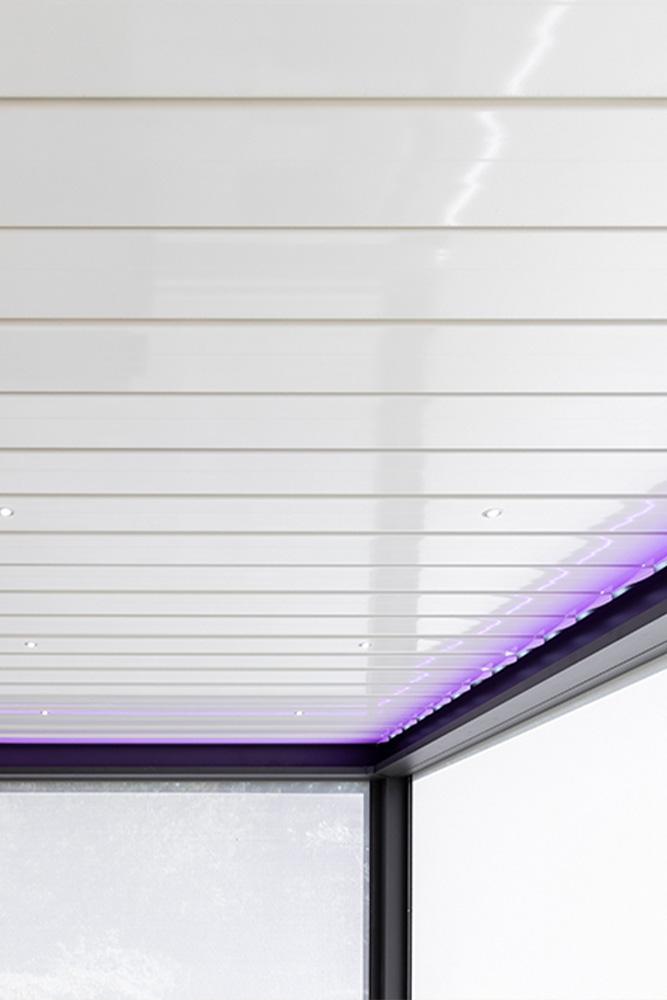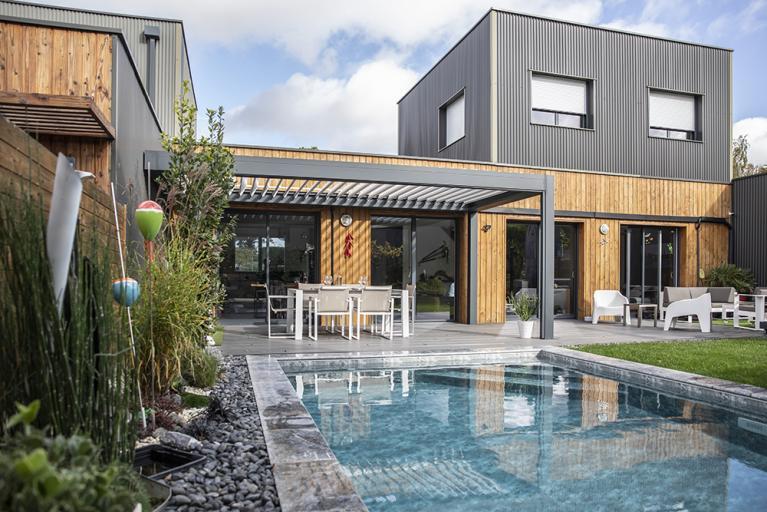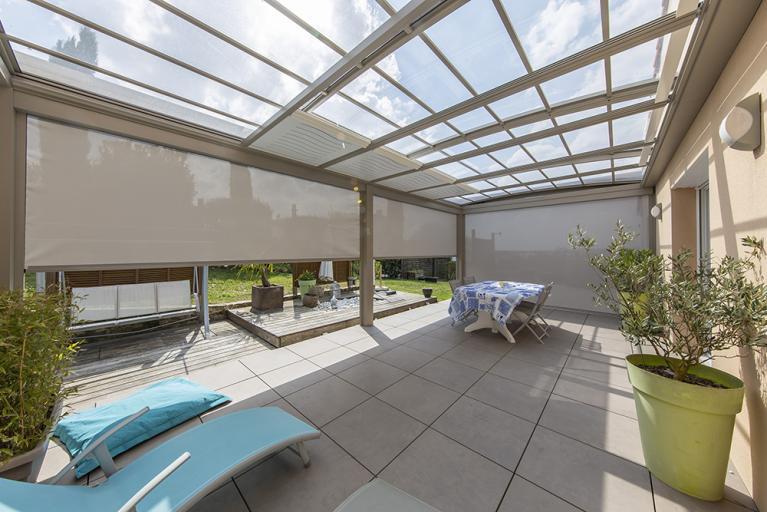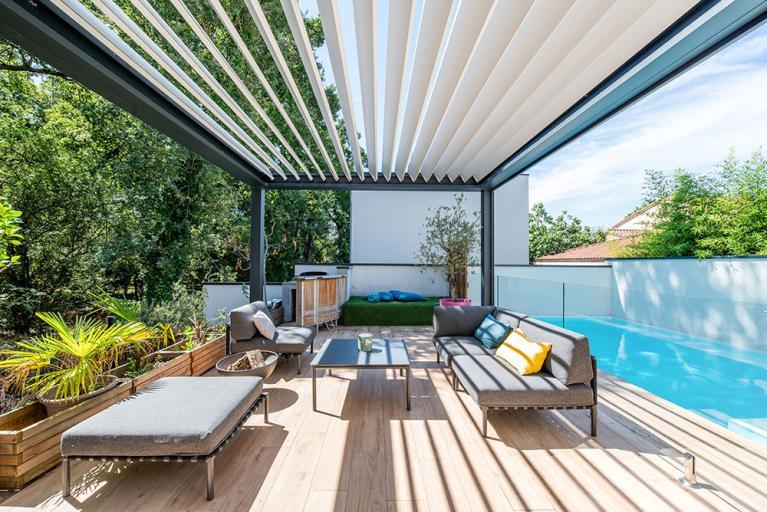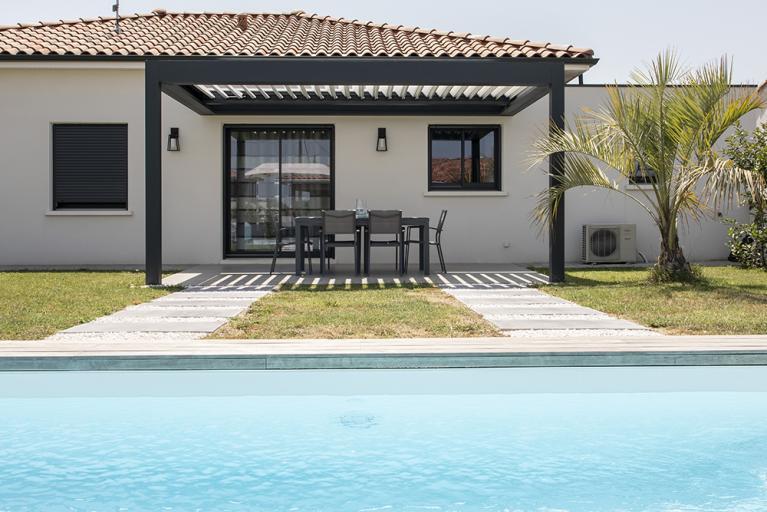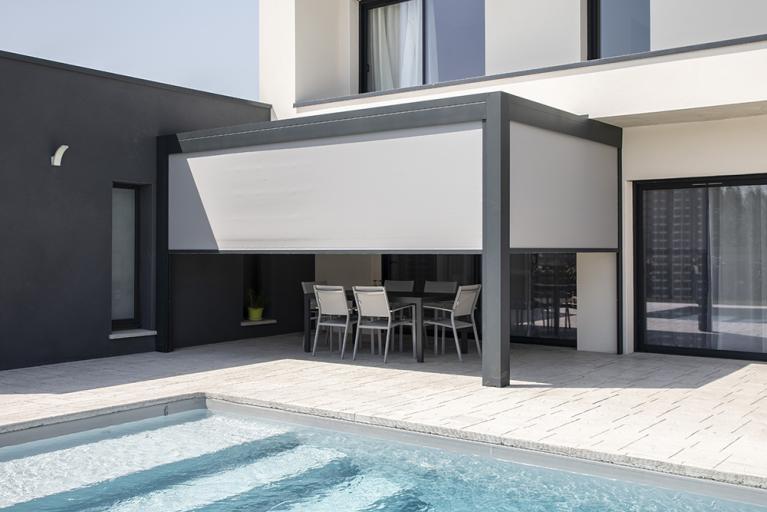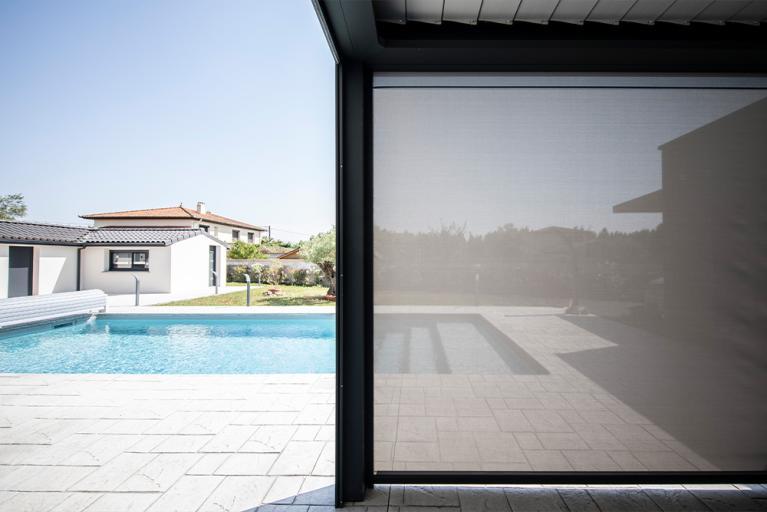How to cover a pergola?
When it comes to pergola covers, you're spoilt for choice. Adjustable slats, rigid covers, stretched canvas or even polycarbonate sheets: each solution offers its own advantages. To find out which one really suits your needs, follow the guide!
What are the different pergola roofing materials?
When it comes to choosing a pergola cover, there's one main question: what material should you choose? The most important thing is to choose a solution that suits your needs, your budget and your constraints.
- Adjustable slats: like a Venetian blind, this system allows you to modulate the light. Also known as a bioclimatic pergola, this system consists of several slats that can be opened and closed (fully or partially) according to the intensity of the sun's rays.
- Canvas: the simplest solution is to install a stretched canvas made from cotton, hemp, linen or even polyester. But as well as being fragile, this type of pergola cover is not very flexible. That's why you can opt for a folding cover which, as its name suggests, allows you to open or close the roof depending on the amount of light you want.
- Rigid covers: by opting for a rigid cover, you can benefit from improved waterproofing. Halfway between a pergola and a conservatory, a rigid roof provides a solid, fixed structure. The cover can be made of polycarbonate, polyester or PVC sheets.
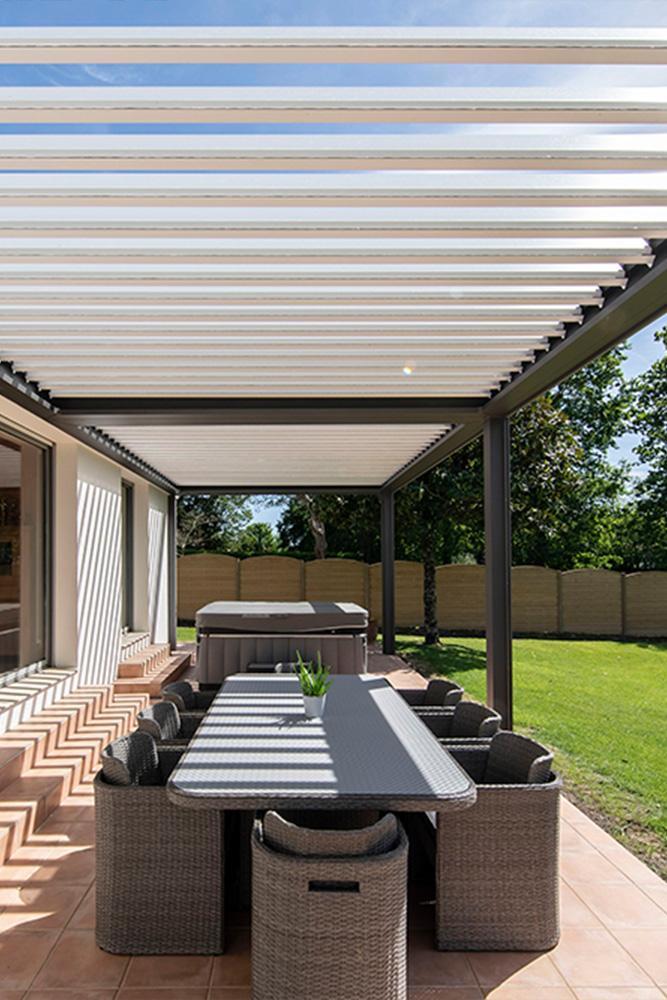
Adjustable slats for bioclimatic pergolas
Adjustable slats for bioclimatic pergolas allow you to manage the sunlight from your pergola as effectively as possible. So you can create shade when there's too much sun or, conversely, enjoy maximum sunlight when you want it.
The slats are often made of aluminium, for maximum durability, and once closed they insulate the pergola completely. In the event of rain, the water is blocked as with a conventional roof.
There are different closing systems for bioclimatic pergolas:
- The orientation of the slats is changed manually, using a crank system (in which case you need to be present to change it).
- The slats can be adjusted by motor and remote control, for greater convenience.
- The pergola's adjustable slats are fitted with an internal sensor, like a weather station for example, and close automatically when it rains.
As well as providing greater comfort under the pergola, the bioclimatic system means that you can enjoy more natural light in the adjoining room if the pergola backs onto the house. This also has an impact on energy costs, and can generate welcome savings.
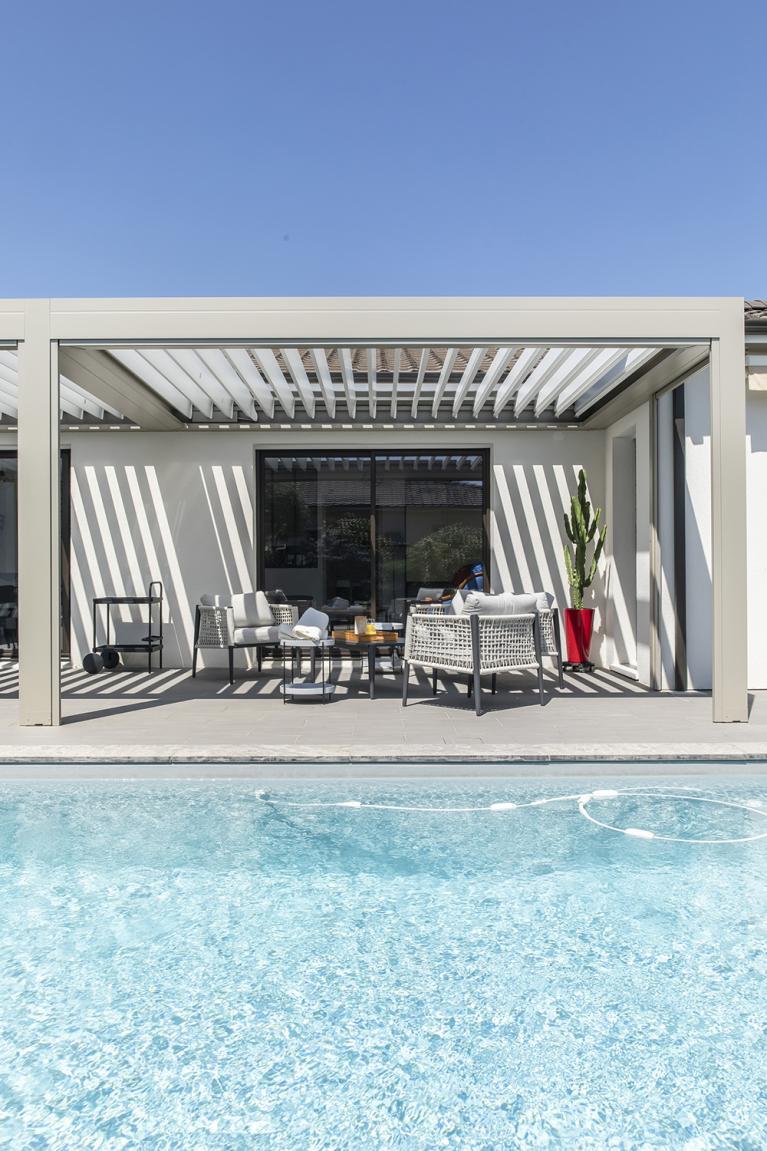
What are the advantages of an aluminium pergola cover?
Despite the advantages of each solution, aluminium is the most versatile pergola roofing material. As well as being indestructible, it also stands the test of time. Unlike canvas or wrought iron (for the structure), aluminium withstands the elements well, doesn't rust and requires very little maintenance.
As well as being durable, an aluminium pergola is also aesthetically pleasing. With its contemporary look, this material offers a sleek, almost airy structure, especially when fitted with adjustable slats. What's more, aluminium pergolas come in a wide range of colours, shades and shapes.
Don't hesitate to contact us to discuss your project.
Find all the articles in the magazine
You have a project?
Would you like a personalised 3D study and a free quotation? Contact us by clicking below.
AKENA is...
Over 40 years of experience
Founded in 1981 by one man, we now have more than 500 employees dedicated to making your project a success.
Made in France
A historic site and two factories covering more than 25,000 m² in Dompierre-sur-Yon in the Vendée region (85)
Innovative and tailor-made products
At AKENA, we are brimming with new ideas to improve and enhance our products.
The European leader in conservatories, pergolas...
But not only! AKENA also offers a complete range of carports and pool houses.
